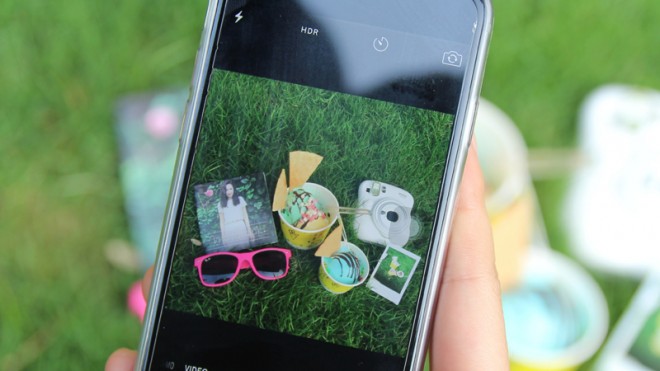
If you’re reading this article, you’ve most likely heard the phrase “influencer marketing,” but you’re probably not entirely sure what it is. It’s no surprise you’ve come across this advertising strategy. In fact, “Instagram influencer marketing”, “influencer marketing platform”, “YouTube influencer marketing”, and many more related queries have made it onto Google’s Breakout list (which means these phrases are being searched for relentlessly). Influencer marketing combines third party validation, testimonials, and subtle sponsored posts and/or ads to promote a brand’s products or services on a social media platform like Instagram, Facebook, or YouTube. Initial research will most likely refer to Kylie Jenner, Kim Kardashian, or Justin Bieber as examples of popular influencers. However, celebrities, pop icons, and superstars aren’t the only ones representing brands. Micro-influencers (also known as mavens), prosumers, and “up-and-comers” can produce amazing results and quality content for businesses.
Different Tiers of Influencers:
- Celebrity: 1,000,000 + followers
- Maven: 100,000 + followers
- Prosumer: 20,000-10,000 followers
- Up-and-Comer: 5,000-20,000 followers
The different titles for social media influencers are determined by their number of followers; however, their audience size doesn’t matter nearly as much as their level of engagement. More often than not, micro-influencers, prosumers, and up-and-comers actually have a more avid following than their celebrity counterparts. A good engagement rate varies from platform to platform. Whereas a 1% engagement rate is okay on Facebook, on Instagram, engagement rates should be closer to 4-10%, and on Twitter should be around 2%.
Why Influencer Marketing?
One of the many appeals of influencer marketing is that brands can connect with, engage, and target the right consumers through the audience of their content creators. Moreover, potential customers don’t view these sponsored posts the way they do your run-of-the-mill advertisement. In fact, customers actually voluntarilyseek out an influencer’s content. What keeps most influencer marketing so authentic is that these product and service validations carry the voice, style, and tone of the content creator. The best influencers don’t represent just any brand off the street—they aim to seamlessly integrate their validation of a product or service into a digital narrative to ensure they preserve credibility for past, present, and future followers. For many reasons, classic ads simply aren’t as convincing as they once were, and nowadays they aren’t even being seen. A study conducted by IAB/YouGov found that 47% of 18 to 24 year-olds use an ad blocker. This means if you’re targeting millennials, there’s a good possibility that nearly half of them will miss your message if you’re still utilizing the antiquated means of internet advertising. The Return on Investment (ROI) for Influencer Marketing is nothing to scoff at either. To begin with, many influencers will post for complimentary products and services, which saves brands from doling out cash. However, even when an influencer does require monetary compensation, many businesses see an average of 600% ROI.
The Four Basic Types of Influencer
- Celebrities: Celebrities cast a wide net with their ridiculously large followings. They’ll generally rack up impressions but be lacking in engagement.
- Journalists: Journalists typically have strong engagement, as they’re providing information about current events, shining a light on new perspectives, and ultimately, shaping our reality. A journalist’s testimonial will provide more credibility and trust for a brand than a celebrity endorsement.
- Brand Journalists: These content creators build trust for businesses through their keen insights and deep perspectives on a variety of topics and industries.
- Thought Leaders: These influencers share big ideas. Brands seek thought leaders to change the way a particular audience may view a given topic.
- Bloggers: Fashion, lifestyle, travel, you name it, bloggers are writing about it. These influencers generally garner a following by using their own platform for posting first and then promote and share their articles on social media. Bloggers dictate the hottest trends, the best travel locations, the most sought-after tech, and so on and so forth.
- Vloggers: YouTube and other video platforms are incredibly influential as they tend to mix valuable insights with entertaining media. When an audience isn’t up to the task of reading a blog, they’ll watch a vlog.
How Should Your Brand Use Influencer Marketing?
Influencer marketing is an incredible tool to increase brand recognition and boost conversions. The most difficult factor is finding the right content creator. Influencers should fit your brand both thematically and at-scale. For example, it probably wouldn’t make a lot of sense for a celebrity influencer to sponsor a small ma’ and pop shop. To assist in the laborious process of finding the right fashion blogger, thought leader, or brand journalist, partner with a specialized micro-influencer marketing agency that will do the vetting for you. ApexDrop ensures only finest influencers represent your brand. Ready to get started? Click here to contact us today.
ApexDrop has helped thousands of authentic micro-influencers connect with quality brands through contextual product gifting (also known as trade collaborations). Imagine having an affordable and easy way to get your products featured by hundreds of influencers immediately on Instagram, but without all the extra work. ApexDrop offers an unparalleled service in campaign management from start to finish and can assure that their clients receive quality posts and authenticity. For more information, schedule a call with an ApexDrop Influencer Specialist today www.apexdrop.com/contact
